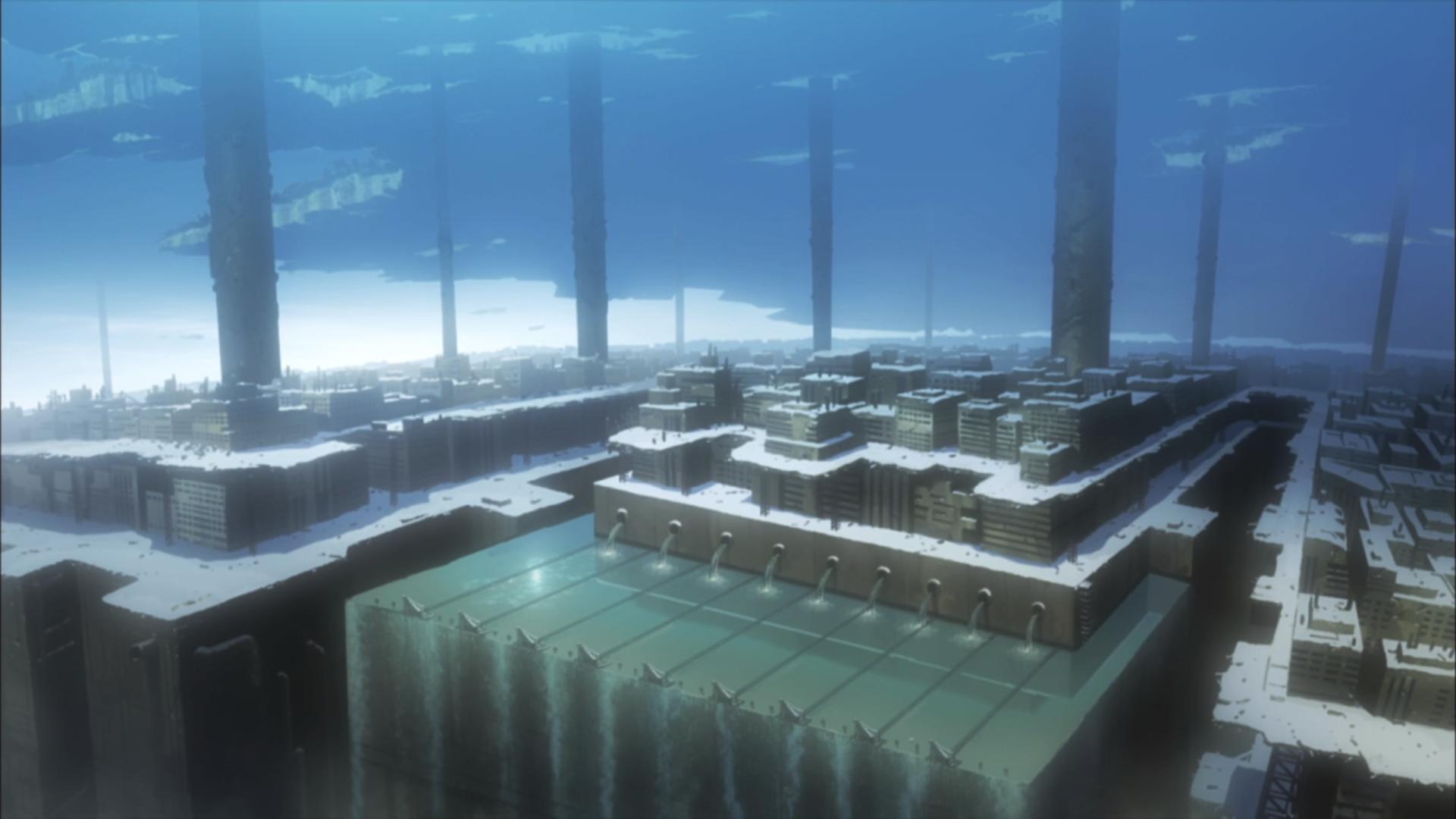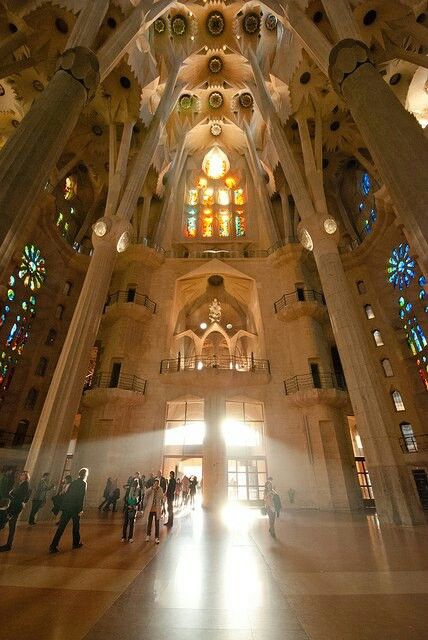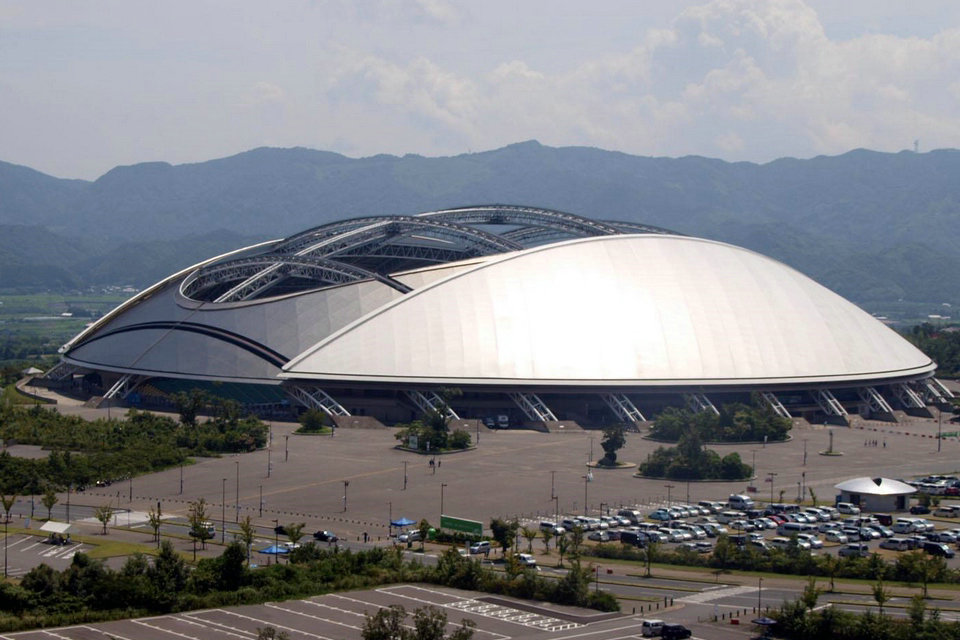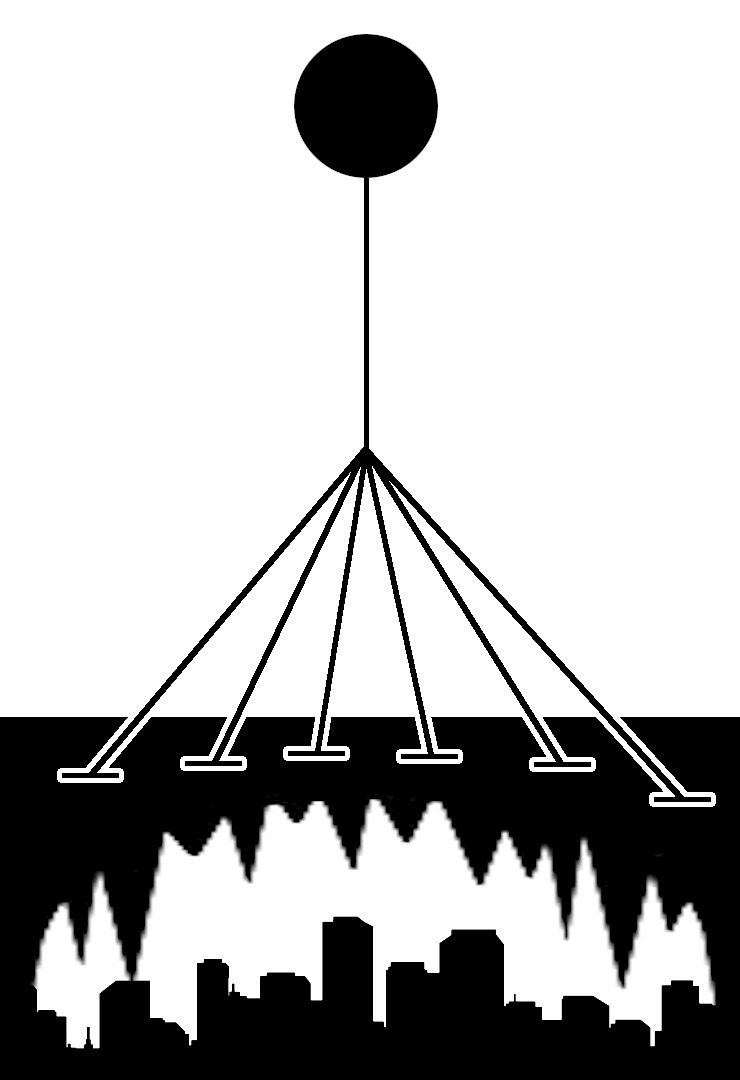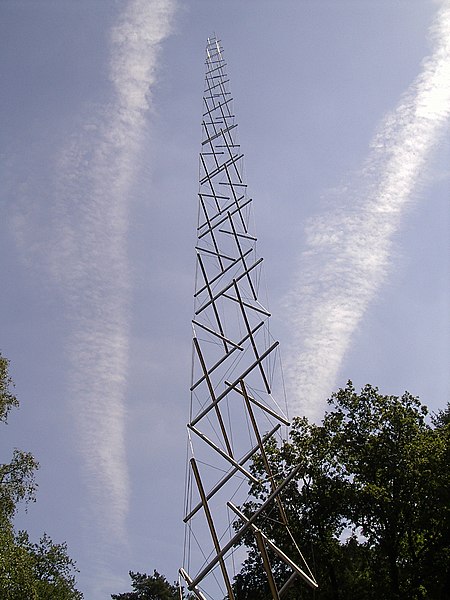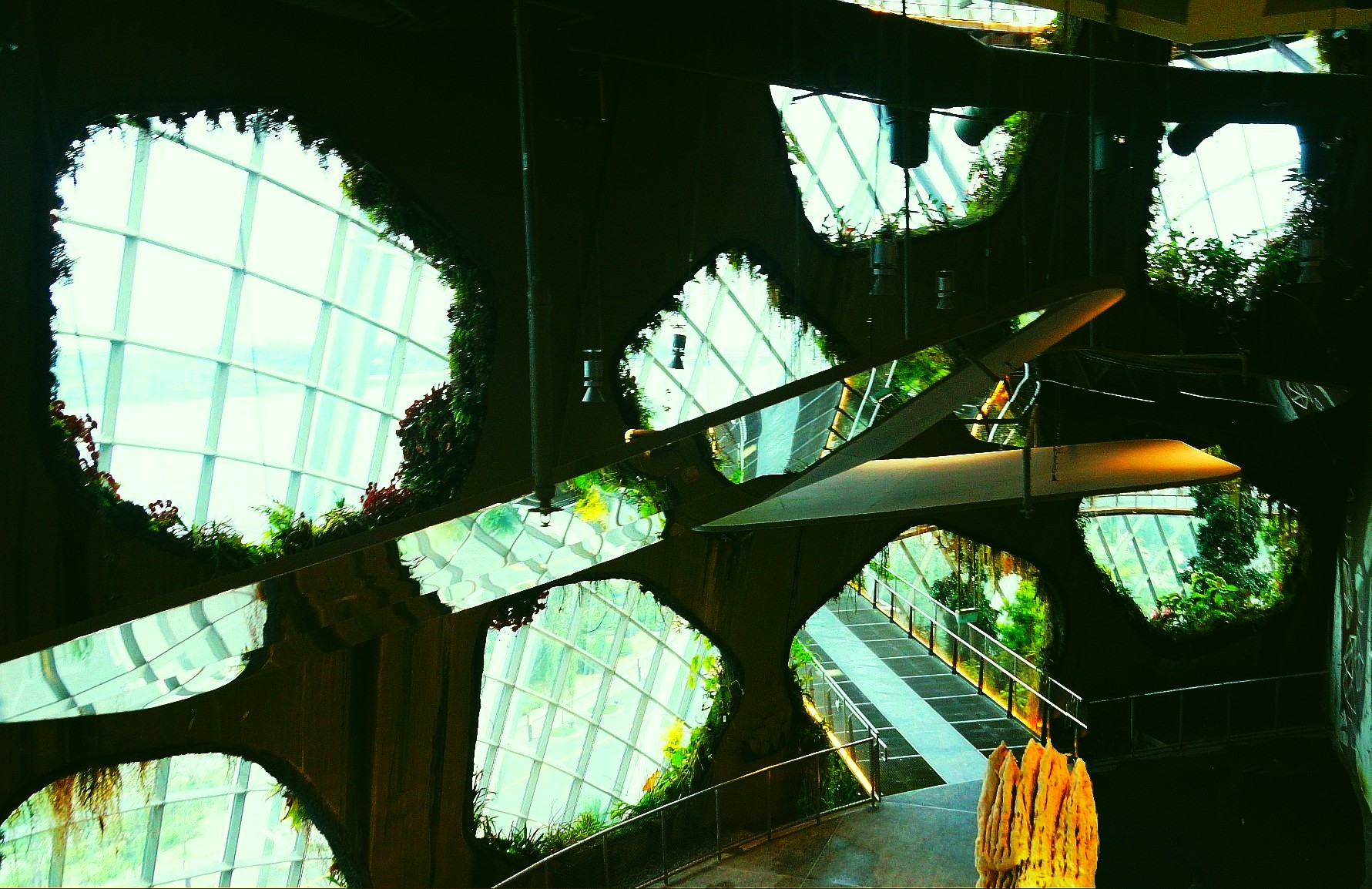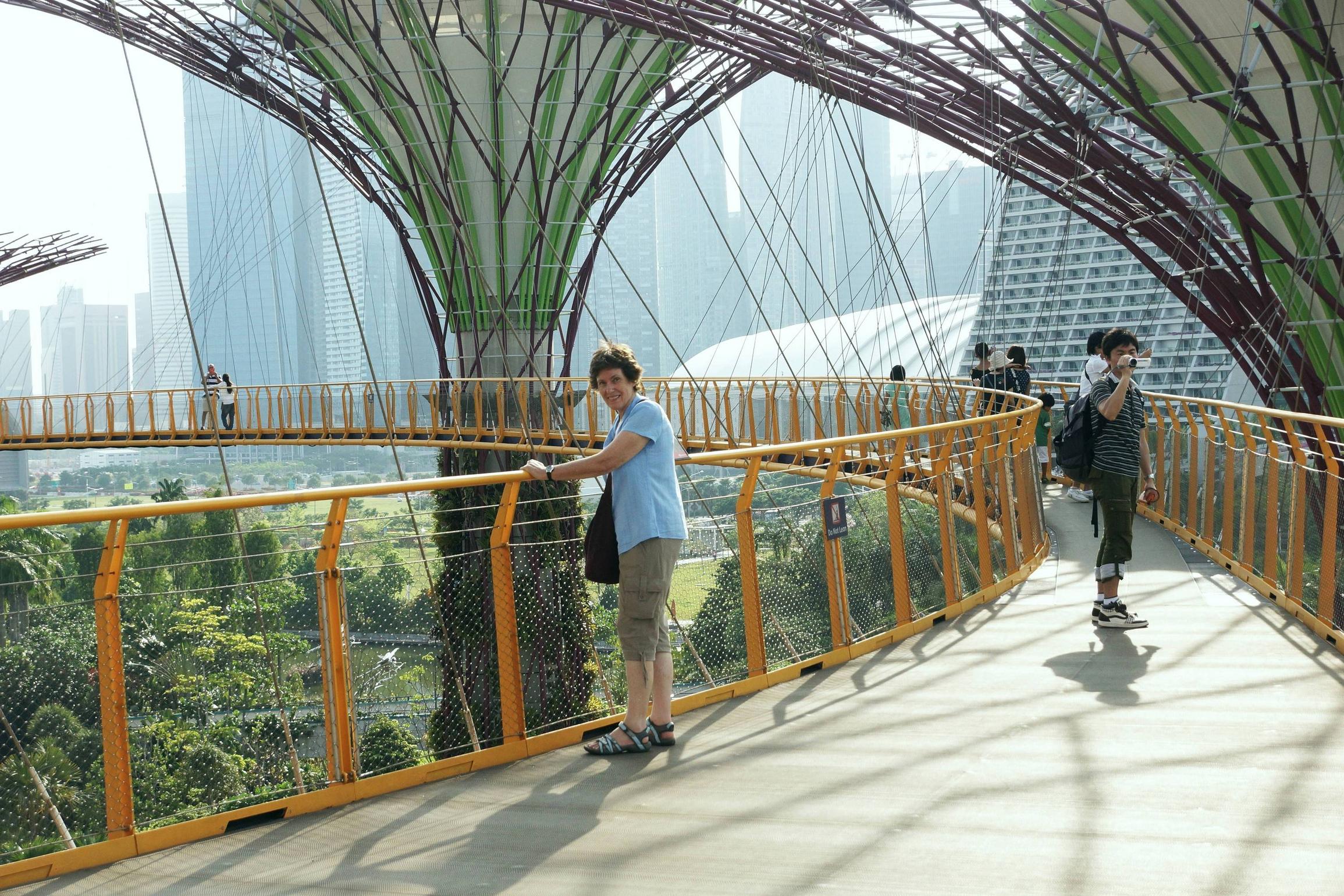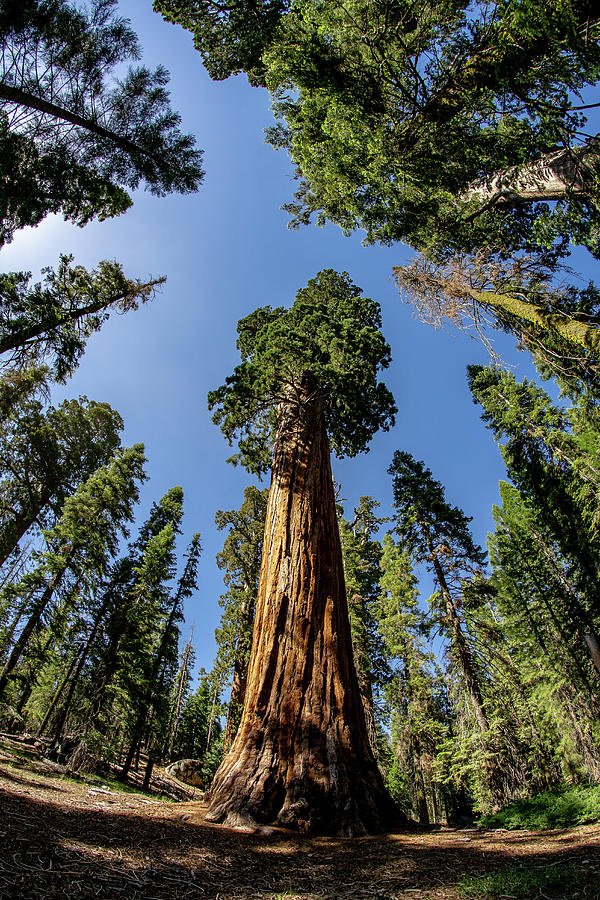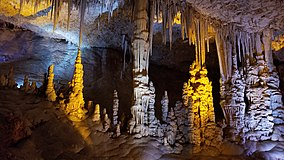Node is the last active city of the lizard people. Node was built to be a self-sufficient city and a nexus of an interconnected bunker system. It was a vanity project from the peak of the lizard empire, so they designed Node to be as spacious as possible.
The problem is with the pesky supporting pillars, necessitated by the ~500 m ceiling-floor distance and the fact that the city being bombarded was a possibility. They're obstructive and break the illusion. Since the designers positively and absolutely didn't want their magnum opus to look like something out of Girl's Last Tour, they had to find a solution.
The question is then, just how could they create the illusion of a large, open-space without compromising the pillars' function? I'd normally try to find a solution by creating models in Minecraft, but I deemed that to be too time-consuming.
They have access to any scientifically possible technology (so CNTs, robots, etc..).
However, you can't wrap metamaterial around the pillars to make them invisible, you can't make the pillars invisible, you can't drug/mind-control/indoctrinate the populace into thinking there are no pillars, and neither can you redefine what a pillar is. I won't allow you to do any of these.
Also, lizard people have very similar personalities to humans, meaning that if humans on average find something soul-destroying (mass-produced apartments and concrete), then so do lizard people. Simply put, you can apply "space-saving" tricks here from IRL.

